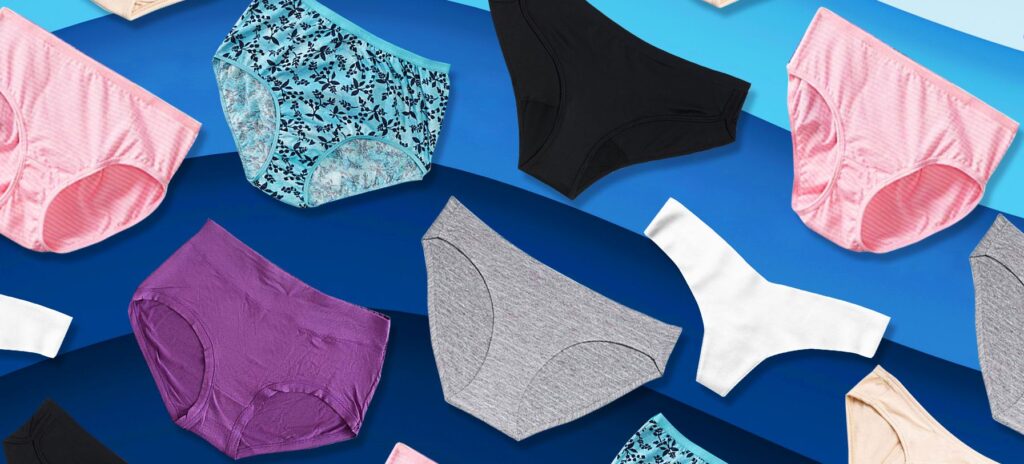Introduction
When it comes to underwear, comfort is key. But beyond comfort, the material of your underwear can significantly impact your overall well-being. Nylon Underwear vs. Cotton are two popular choices, each with its own set of advantages and drawbacks. In this article, we’ll delve into the debate of nylon underwear vs. cotton underwear, exploring the various factors you should consider before making your purchase.
Nylon Underwear: Pros and Cons
Nylon underwear is known for its sleek and smooth texture, making it a popular choice for those seeking a snug fit. The material is highly durable, resistant to wrinkles, and retains its shape well over time. Additionally, nylon underwear tends to be more lightweight and breathable compared to cotton, making it a preferred option for athletic activities or warmer climates.
However, despite its many benefits, nylon underwear may not be suitable for everyone. Some individuals find that nylon underwear lacks sufficient breathability, leading to increased moisture and potential discomfort. Additionally, nylon fabric is less absorbent than cotton, which can result in moisture accumulation and odor retention, particularly in hot and humid conditions.
Cotton Underwear: Pros and Cons
Cotton underwear is prized for its softness and breathability, making it a favorite among those with sensitive skin or allergies. The Cotton fabric allows for ample airflow, preventing the buildup of heat and moisture, which can help reduce the risk of skin irritation and chafing. Moreover, cotton is a natural fiber, making it biodegradable and environmentally friendly.
On the downside, cotton underwear may not offer the same level of durability as nylon. Cotton fabric is prone to shrinking and fading over time, especially when exposed to high temperatures or frequent washing. Additionally, cotton underwear may lose its shape and elasticity with repeated wear, leading to sagging or stretching.
Comfort and Breathability
When it comes to comfort and breathability, cotton underwear often takes the lead. The natural fibers of cotton allow for better air circulation, keeping you cool and dry throughout the day. In contrast, nylon underwear may trap heat and moisture against the skin, leading to a clammy and uncomfortable sensation, particularly in hot weather.
Durability and Longevity
In terms of durability, nylon underwear tends to outperform cotton. Nylon fabric is highly resilient to stretching, tearing, and abrasion, making it a long-lasting option for everyday wear. Cotton, on the other hand, may lose its shape and integrity over time, especially with frequent washing and wear.
Moisture Absorption and Odor Control
One area where cotton excels is moisture absorption and odor control. Cotton fibers have a high capacity for absorbing sweat and moisture, helping to keep you feeling fresh and dry throughout the day. Additionally, cotton has natural antibacterial properties that can help reduce odor-causing bacteria, keeping unpleasant odors at bay.
Skin Sensitivity and Irritation
For individuals with sensitive skin or allergies, cotton underwear is often the preferred choice. Cotton is hypoallergenic and gentle on the skin, making it less likely to cause irritation or allergic reactions. In contrast, some people may find that nylon underwear exacerbates skin sensitivity issues, particularly if the fabric is tight-fitting or abrasive.
Environmental Impact
When it comes to environmental impact, cotton has the edge over nylon. Cotton is a renewable resource that can be grown organically without the use of harmful pesticides or synthetic fertilizers. Additionally, cotton is biodegradable, meaning it can break down naturally over time, reducing its impact on landfills and ecosystems.
Nylon, on the other hand, is derived from petroleum-based products and is not biodegradable. The production of nylon also requires a significant amount of energy and resources, contributing to air and water pollution. However, some companies are working to develop more sustainable alternatives to traditional nylon fabric, such as recycled nylon or plant-based materials.
Fashion and Style
In terms of fashion and style, both nylon and cotton underwear offer a variety of options to suit your personal taste. Nylon underwear is often favored for its sleek and modern look, with options ranging from sheer and lacy styles to sporty and seamless designs. Cotton underwear, on the other hand, is available in a wide range of colors and prints, catering to diverse preferences and fashion trends.
Cost Comparison
When it comes to cost, cotton underwear is generally more affordable than nylon. Cotton is a widely available and inexpensive material, making it accessible to a wide range of consumers. Nylon underwear, on the other hand, may be priced higher due to its durability and performance features. However, the long-term value of nylon underwear may justify the initial investment for some individuals.
Washing and Care Instructions
Both nylon and cotton underwear require proper care to maintain their quality and longevity. Nylon Underwear vs. Cotton should be washed in cold water and air-dried to prevent shrinkage and damage to the fabric. Cotton underwear can be machine-washed with like colors and tumble-dried on low heat for best results. Avoid using bleach or fabric softeners, as these can weaken the fibers and affect the performance of your underwear.
Sustainability and Ethical Considerations
When choosing between nylon and cotton underwear, it’s important to consider the sustainability and ethical implications of each material. Look for brands that prioritize ethical sourcing and production practices, such as fair labor standards and eco-friendly manufacturing processes. Supporting sustainable fashion initiatives can help minimize the environmental impact of your underwear purchase and promote positive change within the industry.
Popular Brands and Recommendations
There are many reputable brands that offer high-quality nylon and cotton underwear options. Some popular choices include Calvin Klein, Victoria’s Secret, Hanes, and Fruit of the Loom. Before making your purchase, be sure to read customer reviews and ratings to ensure you’re getting the best fit and value for your money.
Making the Right Choice
In conclusion, the debate of nylon underwear vs. cotton underwear ultimately comes down to personal preference and lifestyle needs. Consider factors such as comfort, breathability, durability, and environmental impact when making your decision. Whether you opt for the sleekness of nylon or the softness of cotton, choosing underwear that makes you feel confident and comfortable is always in style.
Conclusion
When it comes to choosing between nylon and cotton underwear, there is no one-size-fits-all answer. Both materials have their own unique advantages and drawbacks, and the best choice for you will depend on your individual preferences and needs. Whether you prioritize comfort, breathability, durability, or sustainability, there are plenty of options available to suit your lifestyle. By weighing the factors outlined in this article, you can make an informed decision that ensures you feel confident and comfortable in your underwear choices.
FAQs
Is nylon underwear better than cotton for sports activities?
Nylon underwear tends to be more moisture-wicking and breathable, making it a popular choice for athletic activities where sweat and moisture buildup are common.
Can cotton underwear cause skin irritation?
While cotton is generally considered gentle on the skin, some individuals may experience irritation or allergic reactions to certain dyes or finishes used in cotton underwear.
How often should I replace my underwear?
It’s recommended to replace your underwear every 6-12 months, depending on factors such as wear and tear, elasticity, and hygiene.
Are there any eco-friendly alternatives to traditional nylon and cotton underwear?
Yes, some brands offer underwear made from sustainable materials such as bamboo, hemp, or recycled fibers, which offer similar comfort and performance benefits.
What is the best way to store underwear to prolong its lifespan?
To keep your underwear in optimal condition, store it in a cool, dry place away from direct sunlight and moisture. Avoid overcrowding in drawers or storage containers to prevent stretching or misshaping.







